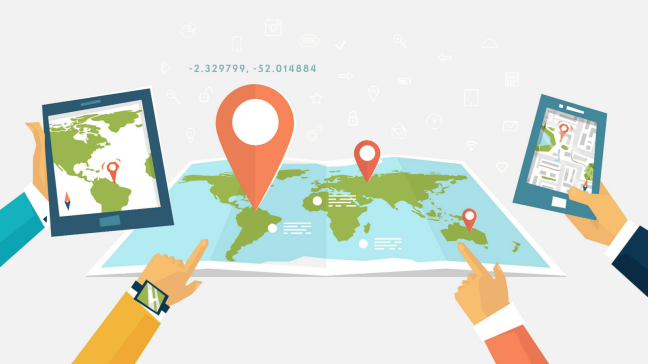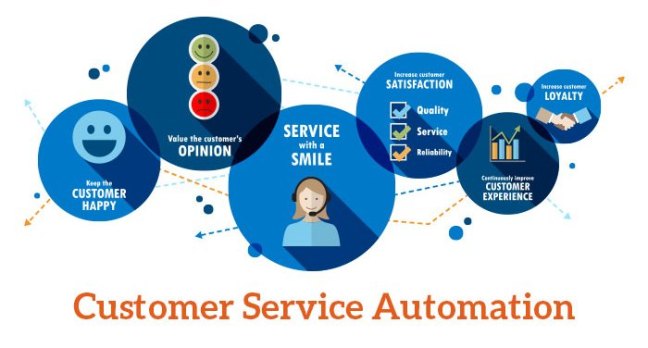That time of year has arrived — both to look back at the developments that have come before and to look ahead to the advancements that will arrive as the calendar year passes.
Recently, Gartner released its predictions for tech trends in 2018 and several years beyond. From an increase in visual and voice search to a rise in bot development over mobile, it looks as though the tech darlings of 2017 will only grow in prominence and power.
But what other leaps forward might we expect in 2018? Let’s take a look at the top picks shared by expert Roger Samara:
1. Geo-targeting
Geo-targeting, or the process of delivering specific content to users based on their locations, may seem like a limiting concept. Why focus in on a single region when you can send a blanket message at lower cost? But drilling down into your customer segment in this way can add a sense of personalization that is more likely to bring in new business.

“Imagine you’re a chiropractor looking to target people in a specific community who are interested in alternative medicine, meditation, and organic coffee,” says Lathan Fritz, founder of Amerisales and an expert in big data for small businesses. “Geotargeting allows you to focus on your ideal customer, getting to know them and knowing their interests, and then targeting those interests on their platforms of choice.”
The wealth of data on social media and mobile devices has given rise to this highly targeted approach.
Ads or other content delivered to your smartphone can change as you travel around an area or even the world. In today’s era of total customization, geotargeting is a natural fit, and advertisers and content providers will continue to leverage it in 2018 and beyond.
Also Read: The FCC Repealed Net Neutrality
2. Anomaly detection/prediction
In manufacturing, a single error in production could be negligible — or it could create massive problems, not just for the equipment and product, but for public relations as well. Quality control has always been with us, but advances in information technology are bringing a new level of sophistication to this critical area.
Companies such as DataRPM, a Progress Company, and Hortonworks, a big data software company, are collaborating on cognitive systems for detecting anomalies in manufacturing.
Michael Ger, general manager for automotive and manufacturing solutions at Hortonworks, described the benefits of this collaborative approach, saying, “DataRPM’s cognitive anomaly detection and prediction capabilities perfectly complement our offerings, as they help companies make sense of the multi-structured data they collect.”
3. Customer service automation
From big-box retailers to tech startups, virtually every company performs some sort of customer service. But thanks to the rise of artificial neural networks, companies are increasingly turning to AI technologies to answer customers’ most common questions.
By 2020, IBM predicts that 85% of all customer interactions will be conducted without a human agent.

Leading the charge toward automated customer service is IV.AI, the world’s first artificial intelligence agency. Led by CEO Vince Lynch, IV.AI made waves at this year’s Facebook F8 Developer Conference by announcing that it had used machine learning to automate 96% of international airline Aeromexico’s customer service interactions.
4. Augmented reality
Expect more apps to take advantage of the iPhone’s latest operating system upgrade, which allows it to overlay additional information on whatever the camera is pointing at. This will be used for far more than the flash-in-the-pan craze of Pokémon GO.
The potential applications are really endless, but one possibility is a phone-based tour guide that provides facts and additional images relevant to nearby sites, stores, restaurants, and even the night sky as viewed through your screen.
5. Deep learning
After the upset win of Google DeepMind’s AlphaGo system, which used a deep learning approach against top-ranked Go master Lee Sedol in spring 2016, the tech community has become increasingly familiar with deep learning. This year, expect further popularization of the term due to successes in Google’s driver less car initiative and facial recognition.

Deep learning succeeds in areas of computer analysis that were previously tough nuts to crack because it does not rely on a brittle set of pre programmed rules for attacking a problem domain. Instead, it uses an approach inspired by the brain’s neural networks to find new ways to solve the most difficult problems.
6. Conversational Platforms
According to Roger Samara, there was a time when any degree of voice recognition by a computer — even a single word — was a big victory. Now Alexa is recognizing songs and musical acts, and Siri is giving you the local weather. But will we see something more like actual conversation in 2018?
It’s possible, but that will require conversational platforms to couple word recognition with a robust, adaptive internal model of the conversation topic, as well as provide an application programming interface that allows third-party developers to utilize their methods and features.
Such platforms will be able to predict what the user is speaking about, what relevant questions to expect, and what answers to deliver.
Once they become viable, conversational platforms may be able to do much more than respond to simple requests; technologists envision potential applications in law enforcement, education, medicine, and other areas.
There’s no doubt 2018 is going to be an exciting year. While these predictions may not play out exactly as forecast, it’s just as likely that stunning, unexpected advances will arrive to take their place. However the year turns out, we look forward to using some of the new technologies that will be discussed in retrospect at the end of 2018.
Originally published at: https://www.inc.com
